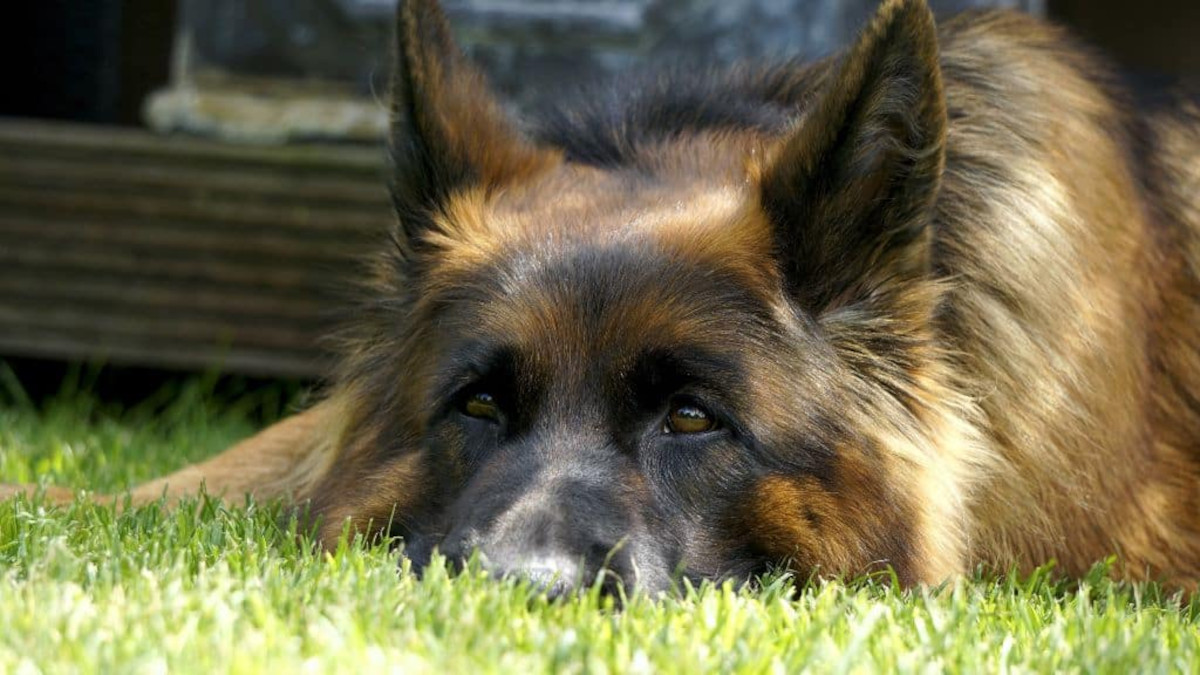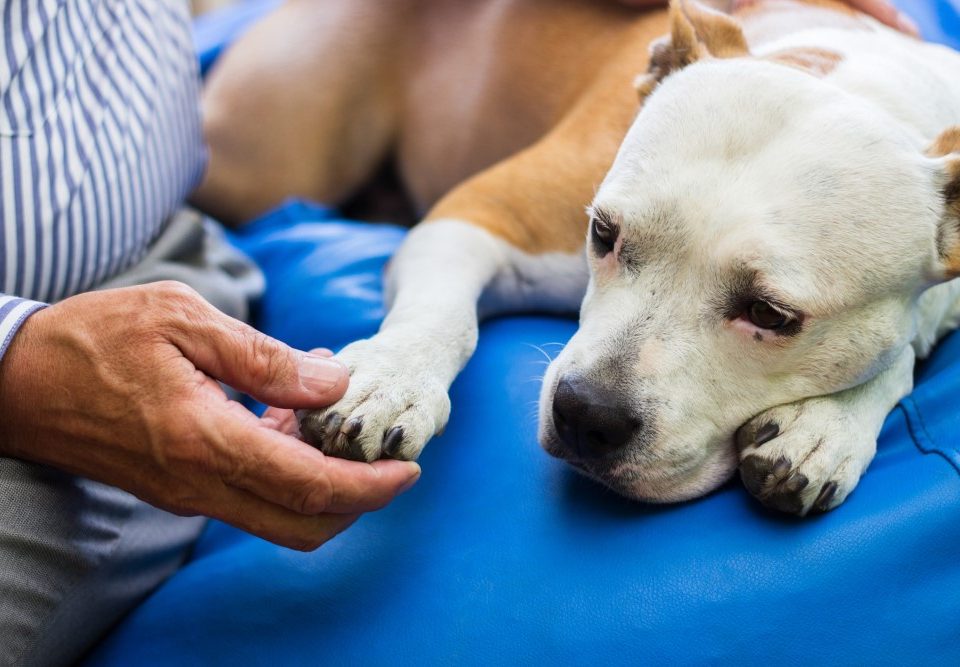
Putting Down An Aggressive Dog
April 30, 2021
How to tell if a cat is dying: 6 signs to watch out for
May 17, 2021If your dog is breathing fast and shallow this may not necessarily be an indication of illness or disease. This is known as tachypnea. And is a normal way for your dog to keep cool by panting with his tongue hanging out. But there are other times when your dog breathing fast could be quite serious.
Whilst fast breathing is called tachypnea, shortness of breath or laboured breathing in dogs is known as dyspnea. Understanding your dog’s respiratory system will help explain the difference between the two:
Inspiration and Expiration
Taking air into the lungs is inspiration. The oxygen in the lungs is transferred to the red blood cells, carrying the oxygen to other body parts. Carbon dioxide is moved from these red blood cells to the lungs and exhaled. When this process fails and your dog breathing rate goes up then that’s an indication that something is wrong.
The normal breathing rate for dogs is between 10 to 35 inhalations and exhalations per minute. A panting dog can inhale and exhale 100 to 350 times per minute.
Tachypnea (rapid breathing)
Common symptoms include:
- Dog shallow breathing more than normal
- Mouth is not open as wide as during panting
- Breathing rate is faster than normal
Dyspnea (laboured breathing)
Breathing difficulties include:
- Greater movement of the chest and abdomen
- Flared nostrils
- Breathing with an open mouth
- Extended neck and head
- Noisy breathing
Panting
My dog is breathing fast could be a normal way of cooling but also be an indication of a breathing problem. Panting is symbolised by:
- An extended tongue
- Wide open mouth
- Fast breathing
- Shallow breaths
Your dog is breathing fast? Probable reasons and warning signs are listed here…
Common Causes
Exercise
Depending on the fitness levels of your dog it may take a little while for breathing to come back to normal after exercise. During hot weather conditions, it’s advisable to modify routines to avoid heat exhaustion
Heat stroke
This is one of the most common reasons that causes rapid breathing in dogs. This happens when your dog is overheating and quickly becomes dehydrated.
Pain
This can often cause your dog to be breathing fast but not panting. Injuries, traumas, sore muscles, and gastrointestinal disorders are all reasons.
Respiratory Disorders
Your dog breathing fast could be due to pneumonia, a tumour on the lung, or laryngeal paralysis. These all lead to heavy breathing or panting.
Heart Disease
A heart that doesn’t function properly will increase your dog’s rate of respiration to compensate for the lack of oxygen. This dog rapid breathing issue is more prevalent in older dogs. Your dog will take deep and rapid breaths to get enough oxygen.
Symptoms
It’s quite normal for your dog to breathe faster after exercising. After a cool-down period breathing should return to normal. If the panting doesn’t slow down after a water break you need to ask your vet for advice.
The signs of heatstroke are excessive panting and drooling. This may be followed by weakness, seizures, and vomiting.
Chronic pain can also result in swelling, loss of appetite, excessive grooming, and mobility issues.
Symptoms of respiratory issues include clear discomfort shown as your dog is breathing fast. Chronic bronchitis causes coughing that weakens your dog and exercise will be uncomfortable.
Other heart disease symptoms include coughing, reduced appetite, swollen abdomen and tiring quickly.
Treatments
Keeping your dog fit and active will avoid an increased breathing rate that can become serious. Remember to keep your dog hydrated.
You can begin to treat heatstroke at home by taking the dog out of the heat and providing plenty of fresh water. Cool your dog down with a soaked towel on nose and paws. Then get your dog to the vets as soon as you can as left untreated heatstroke can actually be fatal.
Treatments for pain relief will be in the form of opiates, steroids, and supplements. Combined therapy may be needed for pain management.
Respiratory problems, if severe, will result in your dog being admitted to the animal hospital until the condition is stable. Oxygen will be administered and your dog’s activity will be limited until the breathing issue is under control.
Heart disease such as congestive heart failure may not be curable. Some medications such as diuretics and vasodilators will bring an improvement of clinical signs. Exercise restriction is crucial to lessen the risk of worsening the condition and preventing death.
When There’s No Other Option
Sadly, dog euthanasia at home may be the kindest solution when your dog is struggling to breathe. You’ll get every opportunity to discuss the procedure with your home-visit vet. And the sedative and anaesthetic agent administered are gentle and painless. You’ll be able to hold your dog whilst he drifts into a peaceful sleep. And all the aftercare arrangements will be made.




